I love turtles. I love being able to swim with turtles in the open water.
Not particularly large compared to other sea turtles, Hawksbills grow up to about 45 inches in shell length and 150 pounds in weight. While young, their carapace, or upper shell, is heart-shaped, and as they mature it elongates. Their strikingly coloured carapace is serrated and has overlapping scutes, or thick bony plates. The hawksbill turtle’s tapered head ends in a sharp point resembling a bird’s beak, hence its name. A further distinctive feature is a pair of claws adorning each flipper. Male hawksbills have longer claws, thicker tails, and somewhat brighter colouring than females.
Average Lifespan: 30 – 50 years.
Size: 24 – 45 inches.
Weight: 100 – 150 pounds.
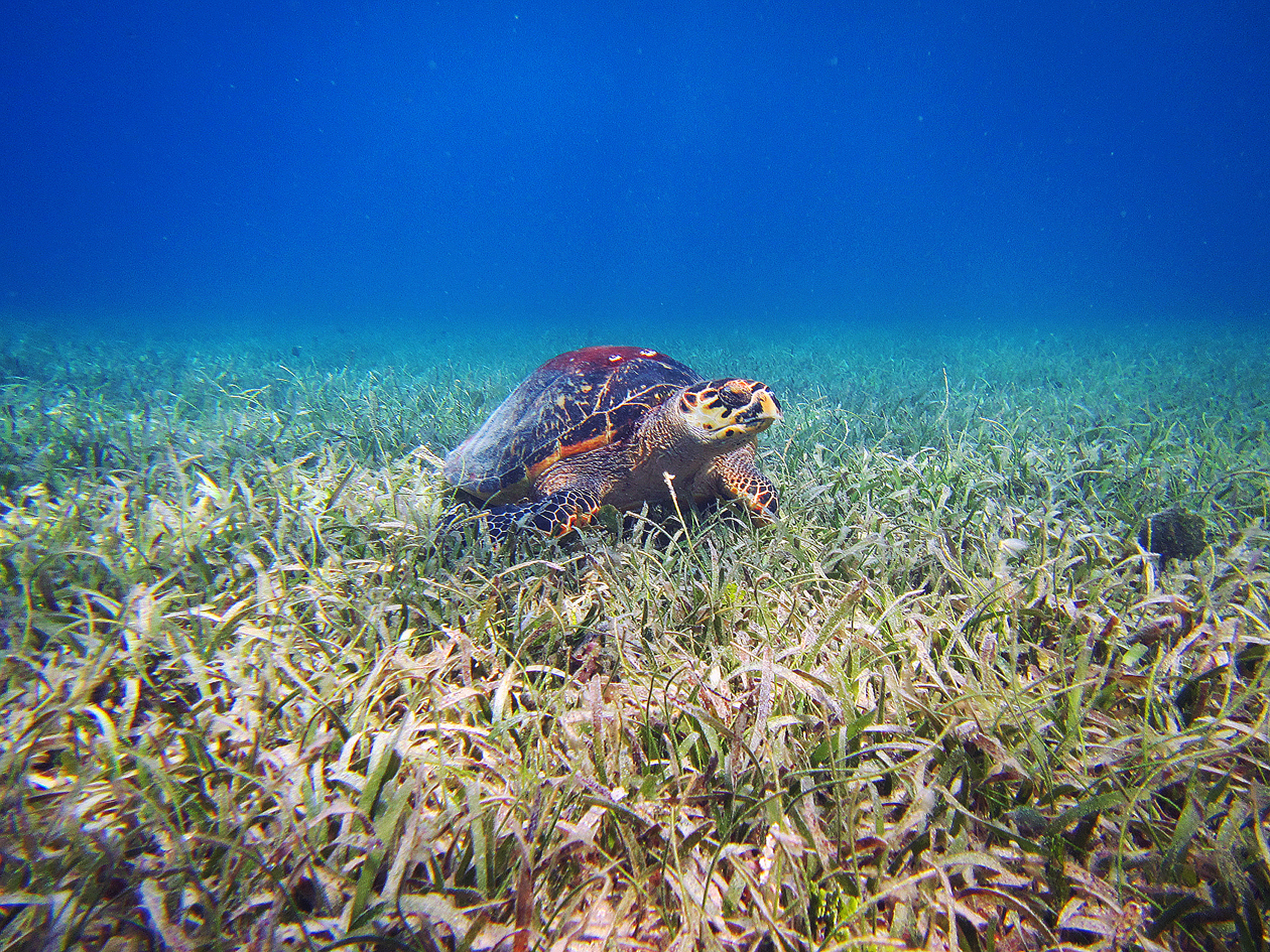
Hawksbill Turtle in seagrass
Habitat and diet
Hawksbill turtles are found throughout the tropical waters of the Atlantic, Pacific, and Indian Oceans. They avoid deep waters, preferring coastlines where the sponges they like to feed on are abundant, and sandy nesting sites are within reach. These highly migratory reptiles help maintain a healthy coral reef ecosystem. Hawksbills are omnivorous and will also eat mollusks, marine algae, crustaceans, sea urchins, fish, and jellyfish. Their hard shells protect them from many predators, but they still fall prey to large fish, sharks, crocodiles, octopuses, and humans.

Hawksbill Turtle off Machioneel Bay on Cooper Island.
Reproduction
Like other sea turtles, Hawksbills make incredible migrations in order to move from feeding sites to nesting grounds, normally on tropical beaches. Every two to five years, female hawksbills return to the beaches where they were born to nest, which normally takes place in shallow waters close to the shore. The nesting procedure begins when the turtles leave the sea to choose an area to lay their eggs. They dig a pit in the sand, fill it with 130 to 160 eggs, and then cover it. At this stage the turtles retreat to the sea, leaving the eggs, which will hatch in about 60 days. The most dangerous time of their lives comes when hatchlings make the journey from their nests to the sea. Crabs and flocks of gulls voraciously prey on the young turtles during this short scamper.
Threats to survival
Like many sea turtles, hawksbills are critically endangered due mostly to human impact. Tortoise shells have been prized among humans since ancient Egypt and, with their stunning shells, hawksbills are no exception: the International Union for Conservation of Nature estimates that millions of hawksbills have been killed within the last hundred years for the tortoiseshell trade.
Though the legal international hawksbill shell trade ended in 1993, trade continues.
Hawksbill eggs are still eaten around the world despite the turtle’s international protected status, and they are often killed for their flesh as well. These graceful sea turtles are also threatened by accidental capture in fishing nets.
Habitat loss is another serious threat facing hawksbill turtles. Coastal development has reduced the space available for them to nest, while rising temperatures associated with global climate change is killing the coral reefs they rely on for food.

Photo above taken inside The Wreck of The Rhone off Salt Island in the British Virgin Islands.
Conservation
Hawksbill turtles are protected by international agreements like the Convention on International Trade in Endangered Species of Wild Fauna and Flora (CITES) and the Convention on Migratory Species. This level of international cooperation is essential to the conservation of hawksbills given their wide geographic range.

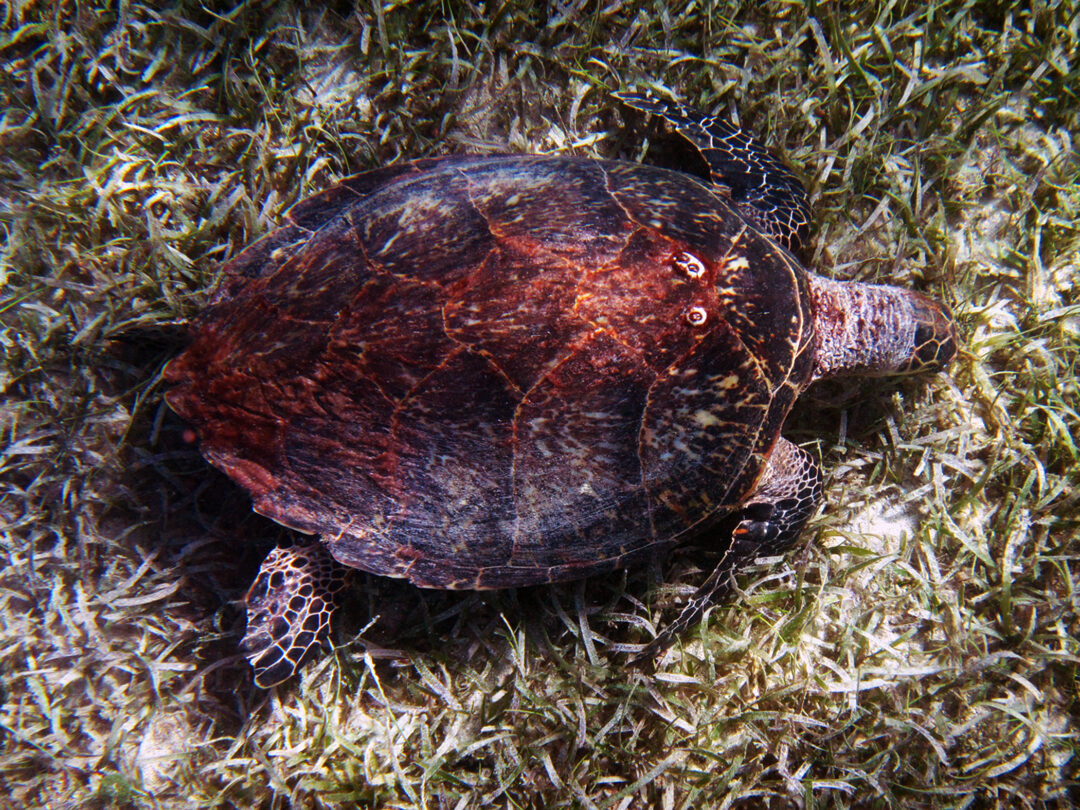
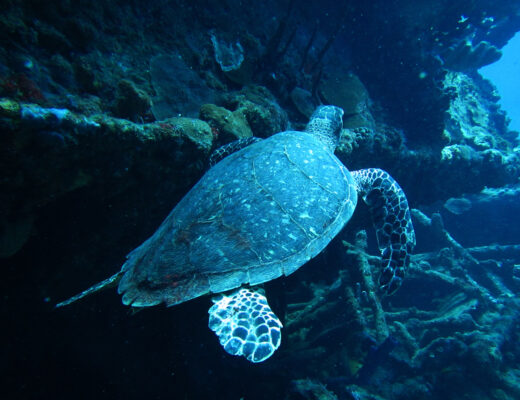
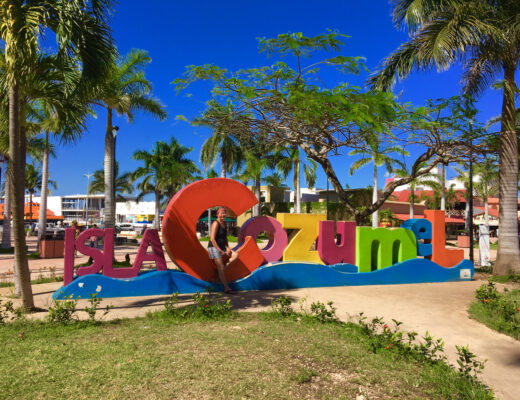
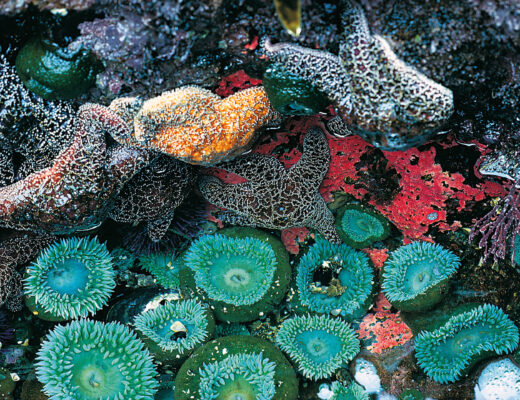

No Comments